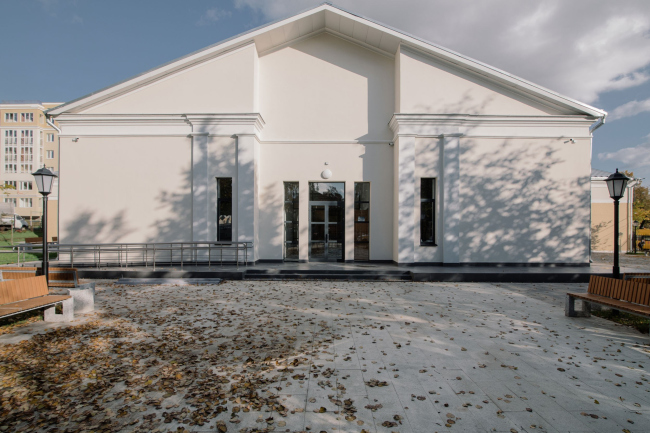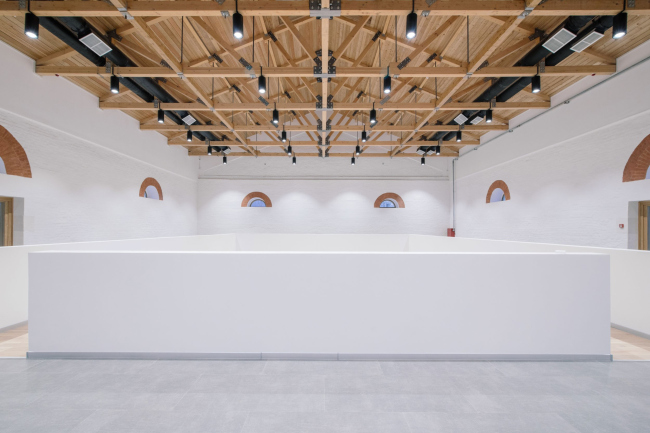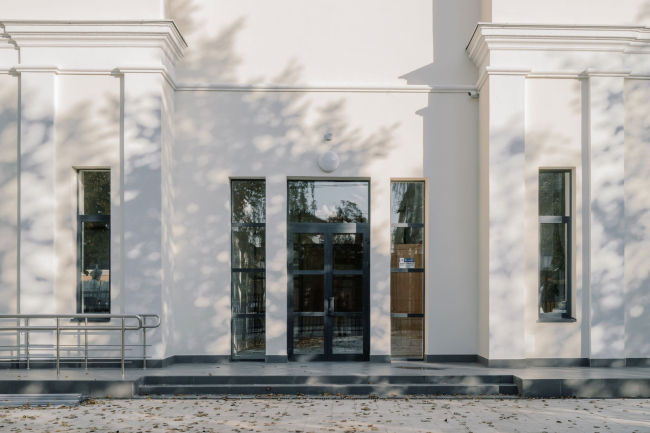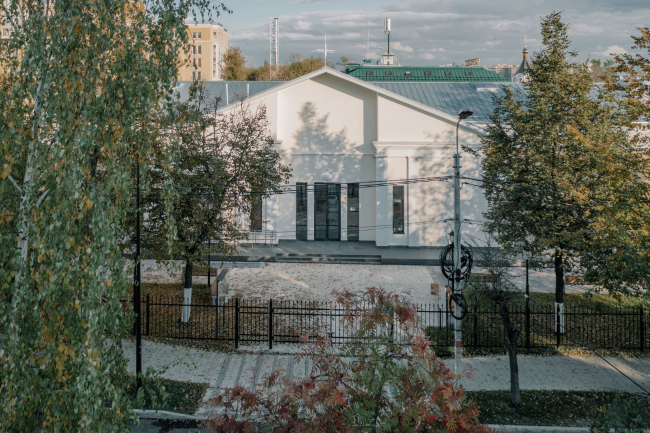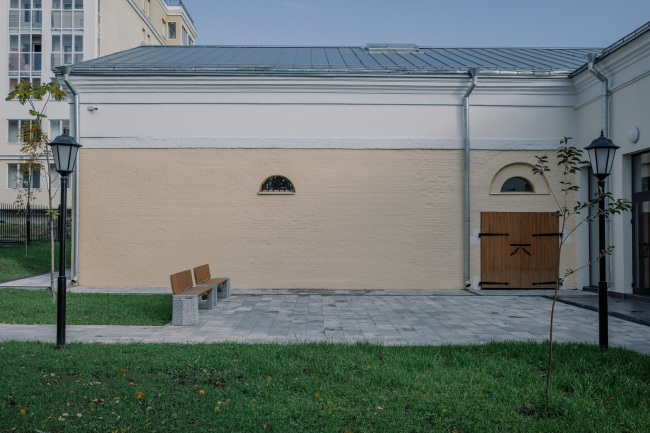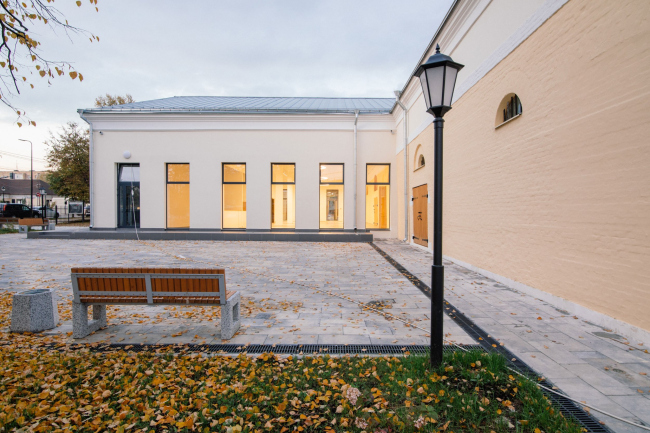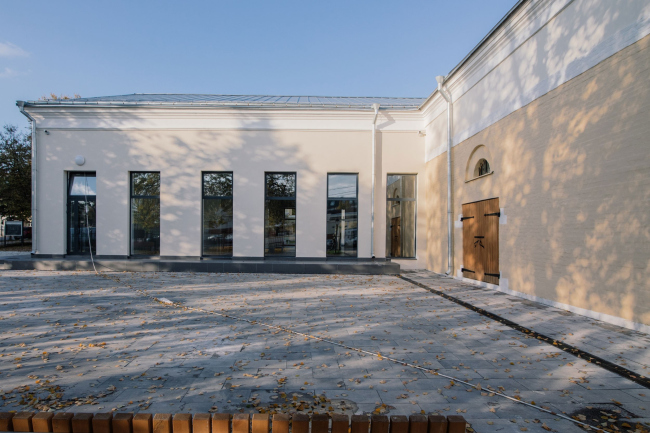|
Published on Archi.ru (https://archi.ru) |
|
| 16.10.2023 | |
|
Reconciliation |
|
|
Julia Tarabarina |
|
| Architect: | |
| Aleksey Kurkov | |
| Studio: | |
| NRDN | |
|
The restoration of the Salt Warehouse for the Zvenigorod Museum, on the one hand, was quite accurately implemented according to the design of the People’s Architect, and, on the other hand, it was not without some extra research and adjustments, which, in this case, was quite beneficial for the project. The architects discovered the original paint color, details of the facades, and studied the history of rebuilds of this building. As a result, the imposing character of the empire building, the oldest one in the city, and the differences of later additions were accurately revealed. Most importantly, however, the city got a new cultural and public space, which is already “working” in full swing. The restoration of the Zvenigorod Manege, done by the project of People’s Architect, began in 2018; then in 2022, the Zvenigorod State Historical and Architectural Museum moved in; the Manege building had been granted to the museum still back in 2007, shortly after it moved out of some of the buildings of the Savvino-Storozhevsky Monastery. Restoration of Zvenigorod ManegeCopyright: Photograph © Arseny Rassokhin / People′s ArchitectRestoration of Zvenigorod ManegeCopyright: Photograph © Arseny Rassokhin / People′s Architect Aleksey Kurkov, NRDN The Manege project was a landmark one for us in many ways. We had an experience of “immersing” ourselves in the museum sphere and the tasks of museum workers, and we had done a lot of work for museums before: navigation, graphic solutions, exposition design. Here, however, we had to tackle the whole building, and on top of that, restoration. It’s always a lot of layers and surprises at every step. When the plaster was removed, the brick wall underneath turned out to be a perfect patchwork quilt; there were more alterations in the process of the building’s functioning than we expected, and each one, as if on purpose, in a new place. We managed to find the color of the original paint job, the two-step framing of the Empire windows, as well as the authentic grilles. I think we managed to “uncover” the Manege, to show the city its peculiarities. Before the restoration it looked like a provincial “house of culture” (a Soviet term for a community center): now the historical value of this building and the fact that it belongs to a period quite early for the urban environment of Zvenigorod is felt much more acutely. And this, of course, is not solely our merit: the museum staff, including the deputy director of the museum for science, Dmitry Sedov, took an active part in the work. He was the first to start studying the history of the Zvenigorod Manege, published a study of its history based on archival materials, and stayed with us throughout the course of our work. On the other hand, the urban center of Zvenigorod itself has changed over the recent time: a park has appeared nearby, and the Moskovskaya Street has been improved – since the museum approaches the Manege largely as a public space and emphasizes events, lectures, master classes, etc., the renovated building has organically integrated into these transformations. The museum has become part of the public life of the city, and we consider this to be very important as well. It always feels good to see a derelict territory being revitalized and included in the city fabric, and this was exactly the case with the Manege: today, working in combination with the Alexander Nevsky Church, it confidently “holds” the beginning of Moskovskaya Street, demonstrating a clearly “Venetian”, almost blind, empire sidewall. What can be there behind such a wall? Nothing but a museum! Restoration of Zvenigorod ManegeCopyright: Photograph © Arseny Rassokhin / People′s ArchitectThe pseudo-respectable surroundings – markers, office buildings, and “high-end” residential complexes – do not look half as impressive by contrast. All these buildings are mostly yellow, or sometimes white, like the church. In Zvenigorod, even the Soviet “crate” of the Zvenigorod Hotel and a 1970’s five-story building were also painted yellow. Thus, it comes as no surprise that at first the architects suggested cleaning the facades down to the brick to show the antiquity of the walls: the Manege is not Gorodok or Savvinsky Monastery, but it is the oldest stone building in Zvenigorod itself. 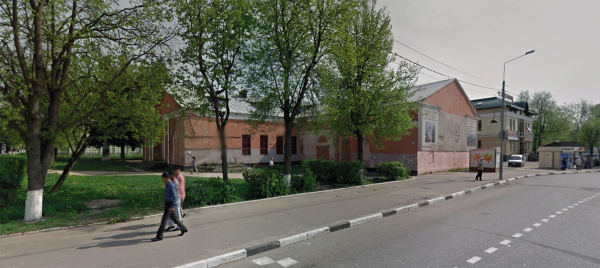 The project of restoring the Zvenigorod Manège. View from the Moskovskaya Street (current situation) © People's ArchitectCopyright © People′s Architect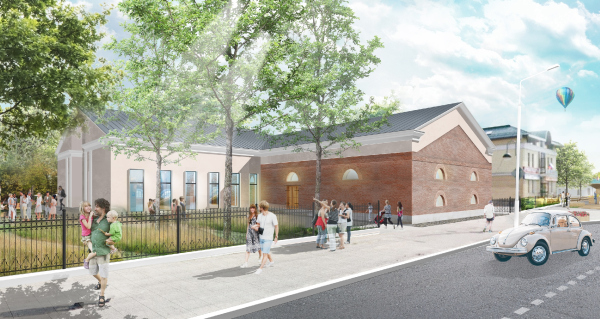 The project of restoring the Zvenigorod Manège. View from the Moskovskaya Street (project proposal) © People's ArchitectCopyright © People′s ArchitectHaving cleared the walls, the architects found a shade of the original coloring. Fortunately, it turned out to be not bright, like yolk, and not the gloomy “Dostoevsky” yellow, but pretty light, something between empire yellow and beige. This was a serious argument in favor of painting the old walls in the original color. Of course, as a result, the whole coloring pattern of the project changed, although the idea of separating the older and more recent parts through texture and coloring remained the same. However, everything became softer and, perhaps, the project benefited from it. The additions and superstructures have become almost white, the difference between the order details and the background of the walls in them is barely distinguishable, which is why the facade of the foyer, which was added for a Soviet cinema in the 1960s, but for some reason in the style of the early 1950s, if not 1930s, with pilasters and a loggia of the entrance, has Palladian features. The “young pioneer” spirit largely evaporated, and the building began to look more “palatial”, standing among the linden trees, again, reminiscent of Venice. I mean, some of the “young pioneer” spirit may have remained, but now it’s almost like the Giardini. Restoration of Zvenigorod ManegeCopyright: Photograph © Arseny Rassokhin / People′s ArchitectRestoration of Zvenigorod ManegeCopyright: Photograph © Arseny Rassokhin / People′s ArchitectThe extension became almost white, and its facades are covered with plain plaster. By contrast, the old walls are not only brighter, they are also unplastered. Knowing the history of the building, by the texture of the brickwork you can see where the old masonry is and where the openings have been laid. The relief of the wall “works” well in slanted light. Restoration of Zvenigorod ManegeCopyright: Photograph © Arseny Rassokhin / People′s ArchitectThe solution with painting is extremely successful: first, it is historically correct: yellow color is typical for the Empire style, and if the warehouse was like that, it is fair to restore the painting. Second, the brick walls that have been cleared everywhere over the last 15 years have become a bit tiresome – the technique was borrowed from the practice of renovating the brick workshop, i.e. from a somewhat different, later context. Well, if we talk about empire analogies, then perhaps we should not compete with Punta Dogana. In short, it has become warmer and cozier, the nuances of the difference between the annex and the superstructure have been preserved, but now they are not so conspicuous and blue reveal themselves when you take a closer look at them. Another curious thing about the project: if the hung windows of the Manege were clogged up, the windows of the foyer were cleared even a little more in the lower part to bring them “down to the floor”.  Restoration of Zvenigorod ManegeCopyright: Photograph © Arseny Rassokhin / People′s Architect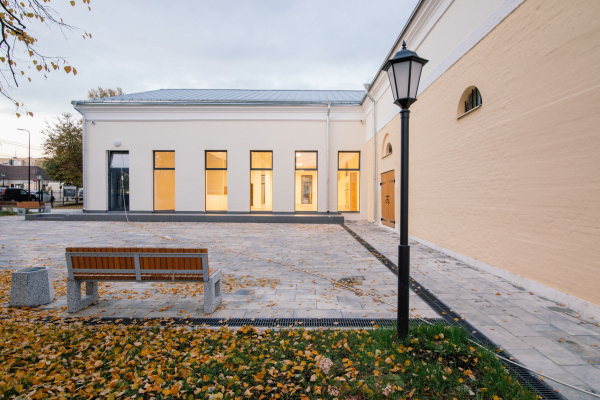 Restoration of Zvenigorod ManegeCopyright: Photograph © Arseny Rassokhin / People′s Architect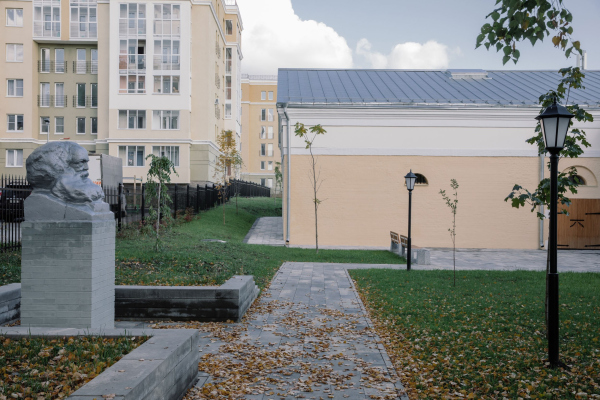 Restoration of Zvenigorod ManegeCopyright: Photograph © Arseny Rassokhin / People′s Architect Project of restoration of Zvenigorod Manege, 2021Copyright © People′s Architect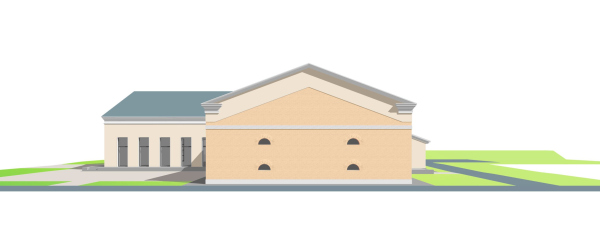 Project of restoration of Zvenigorod Manege, 2021Copyright © People′s Architect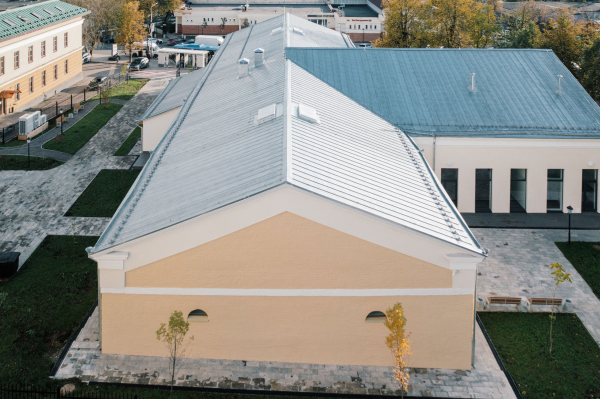 Restoration of Zvenigorod ManegeCopyright: Photograph © Arseny Rassokhin / People′s Architect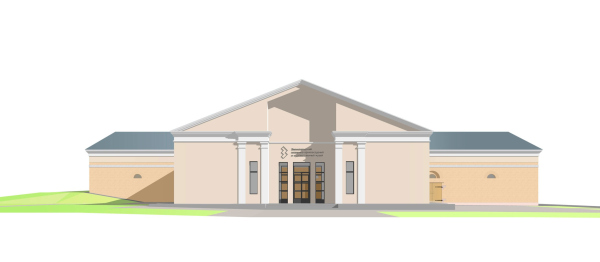 Project of restoration of Zvenigorod Manege, 2021Copyright © People′s Architect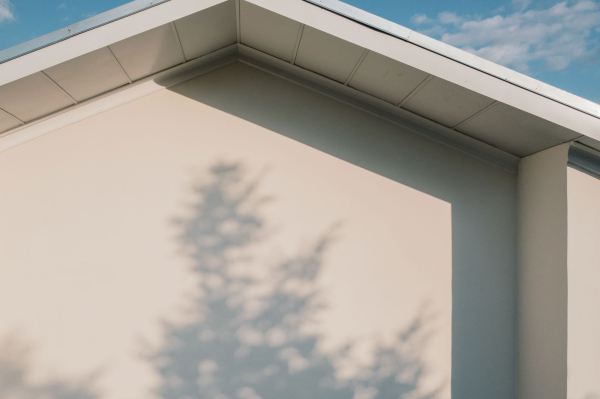 Restoration of Zvenigorod ManegeCopyright: Photograph © Arseny Rassokhin / People′s ArchitectInside, the distinction between the different parts is also visible, on two levels. The first distinction is when we enter the foyer and see the outer wall of the warehouse, but from the inside: here it is also yellow, but the arches of the windows are painted terracotta – this is what little that remains of the idea to expose the brick. It must also be said that the architects moved some of the doors: originally, it was planned that all the apertures would be regularly placed underneath the arches, but after the architects found the contours of original doors, they moved the entrances, thus enhancing the complexity of the building’s history. 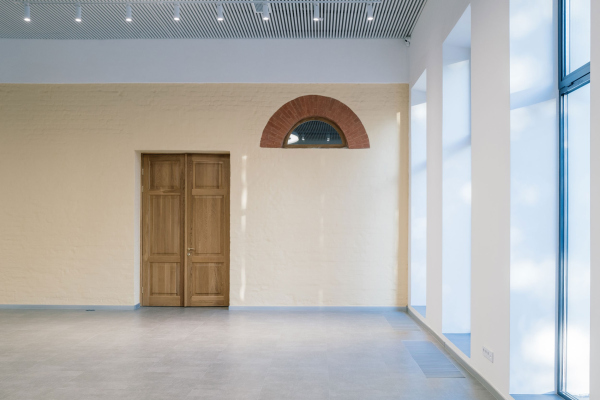 The doors were planned to be placed under the arched windows, but finding traces of the former openings, they were displaced. Restoration of Zvenigorod ManegeCopyright: Photograph © Arseny Rassokhin / People′s Architect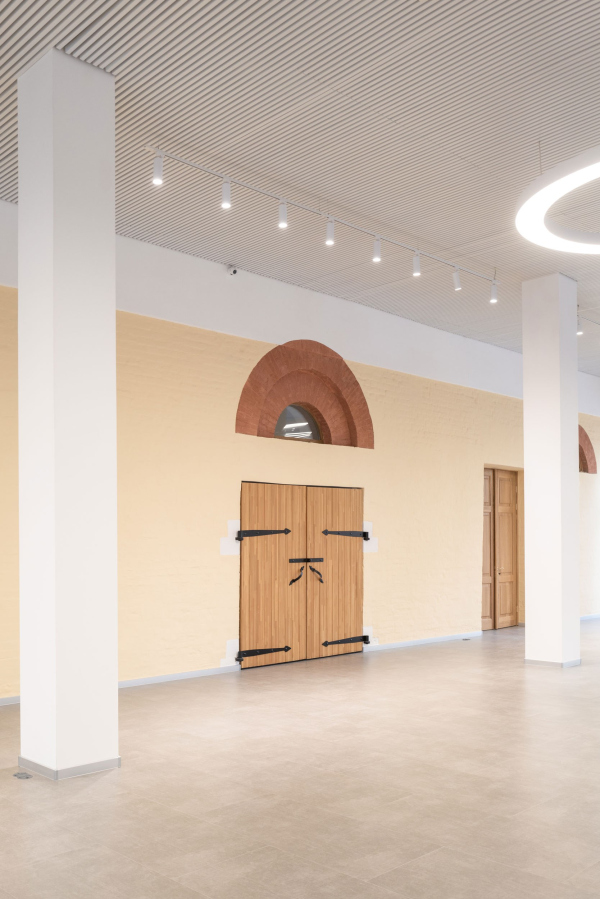 Restoration of Zvenigorod ManegeCopyright: Photograph © Arseny Rassokhin / People′s ArchitectFinally, inside, in the two exposition halls, the walls are white, with exposed masonry relief, and the archivolts are terracotta. Thus the architects, striking a generally “light” note, emphasize the similarities and differences of impressions outside, inside, and the transition between them. 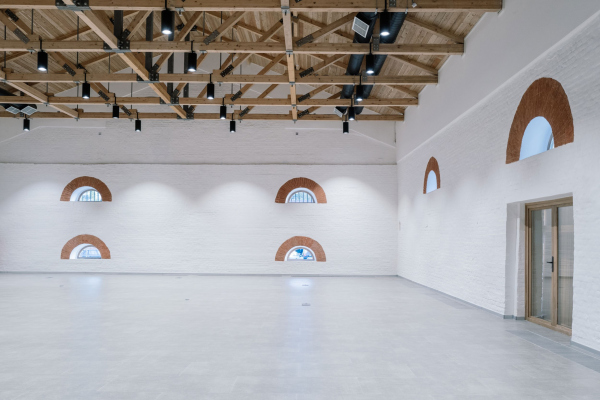 Restoration of Zvenigorod ManegeCopyright: Photograph © Arseny Rassokhin / People′s Architect The arches inside and outside. Restoration of Zvenigorod ManegeCopyright © People′s ArchitectThe ceiling is a highlight. It was trussed from day one; the inclination of the roof was retained in the project, only two skylights were added to each hall. The actual beams and rafters are new, it is a beautiful construction, mostly made of glued wood, not as huge and bright as in the Moscow Manege – generally speaking, it stands among the many modern constructions of this kind, it has long been an actual technique – but it still reminds of the Moscow Manege, living up to its name. “Maybe of the St. Petersburg one too” – the architects specify, and it becomes clear that the similarity to a number of museum maneges was certainly implied here from the very start. That being said about the wood, let’s now mention the fact that all the metallic parts – from lanterns to fastenings – are black, just as the ventilation pipes, which occasionally remind you about the blue pipes of GES-2, placed similarly behind the lower tier of the trusses. In other words, you can see a lot of architectural quotes here – both direct and carefully hidden. 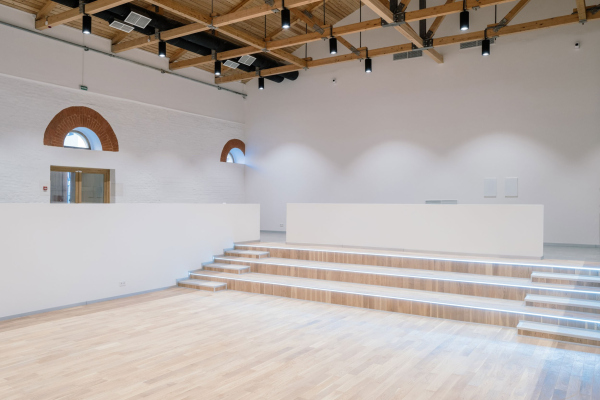 Restoration of Zvenigorod ManegeCopyright: Photograph © Arseny Rassokhin / People′s Architect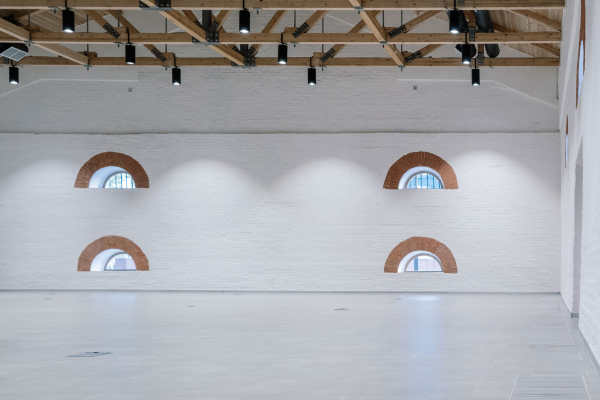 Restoration of Zvenigorod ManegeCopyright: Photograph © Arseny Rassokhin / People′s Architect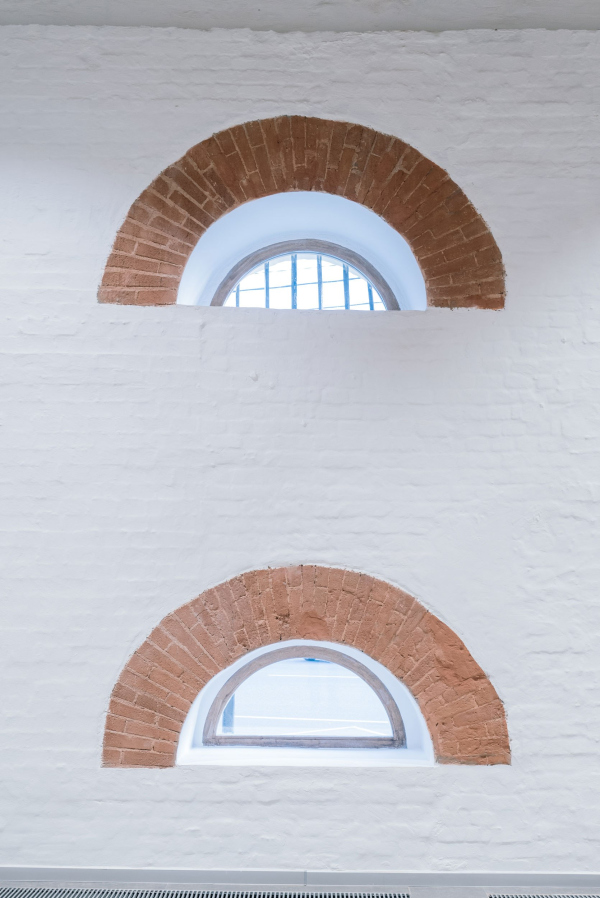 Restoration of Zvenigorod ManegeCopyright: Photograph © Arseny Rassokhin / People′s Architect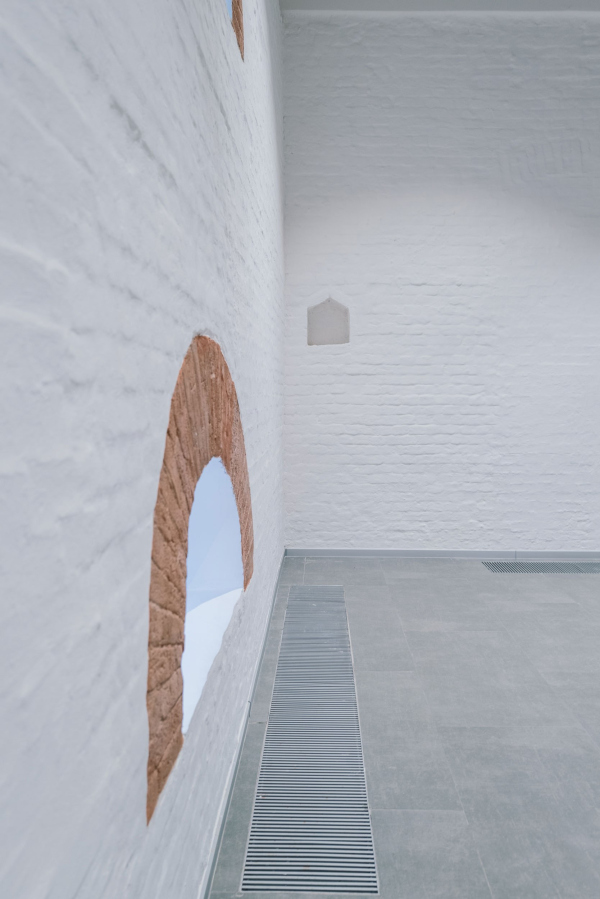 Restoration of Zvenigorod ManegeCopyright: Photograph © Arseny Rassokhin / People′s Architect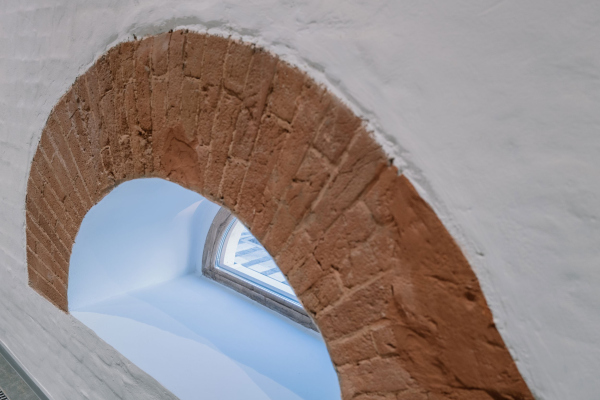 Restoration of Zvenigorod ManegeCopyright: Photograph © Arseny Rassokhin / People′s Architect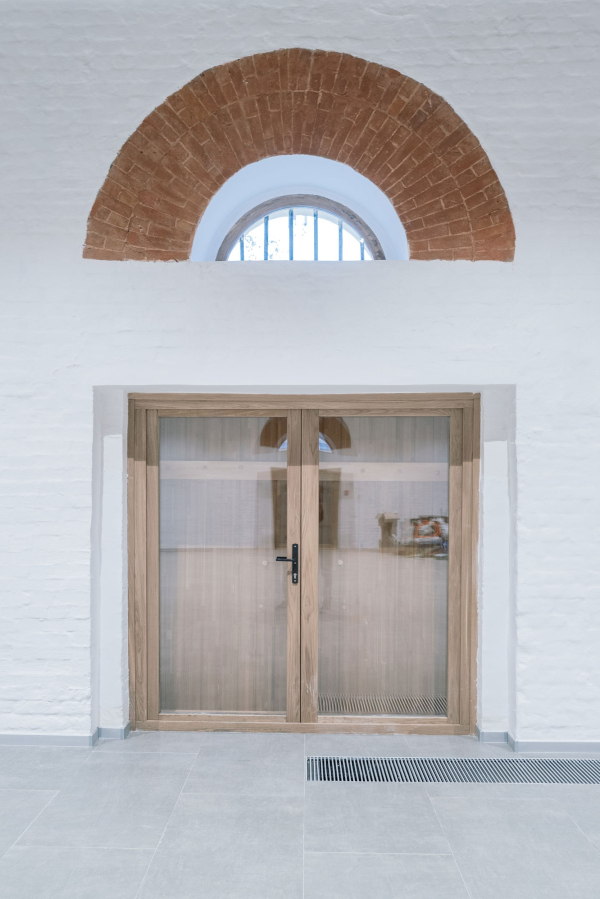 Restoration of Zvenigorod ManegeCopyright: Photograph © Arseny Rassokhin / People′s Architect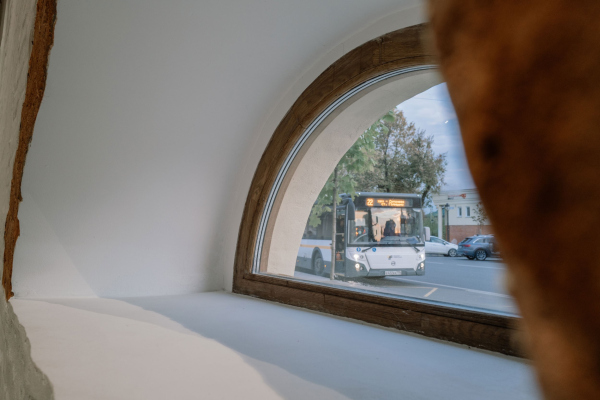 Restoration of Zvenigorod ManegeCopyright: Photograph © Arseny Rassokhin / People′s Architect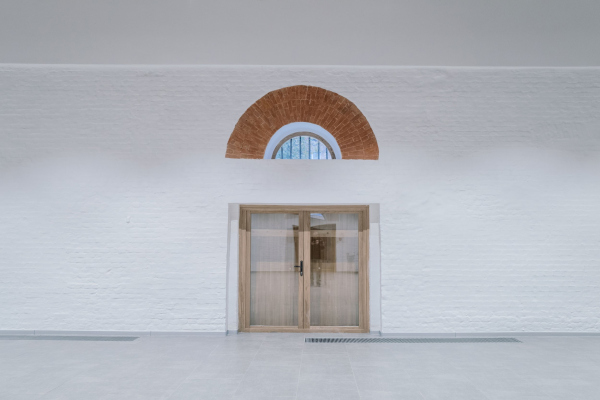 Restoration of Zvenigorod ManegeCopyright: Photograph © Arseny Rassokhin / People′s Architect Restoration of Zvenigorod ManegeCopyright: Photograph © Arseny Rassokhin / People′s Architect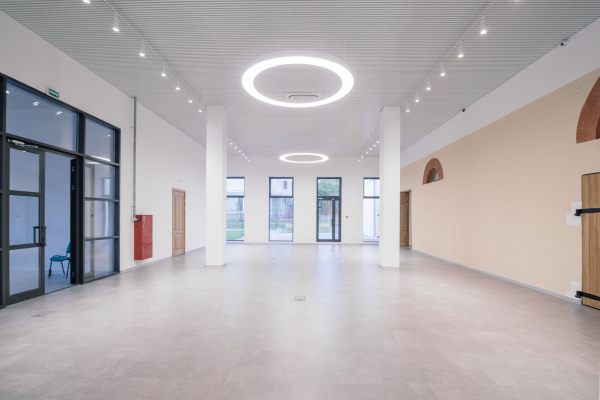 Restoration of Zvenigorod ManegeCopyright: Photograph © Arseny Rassokhin / People′s Architect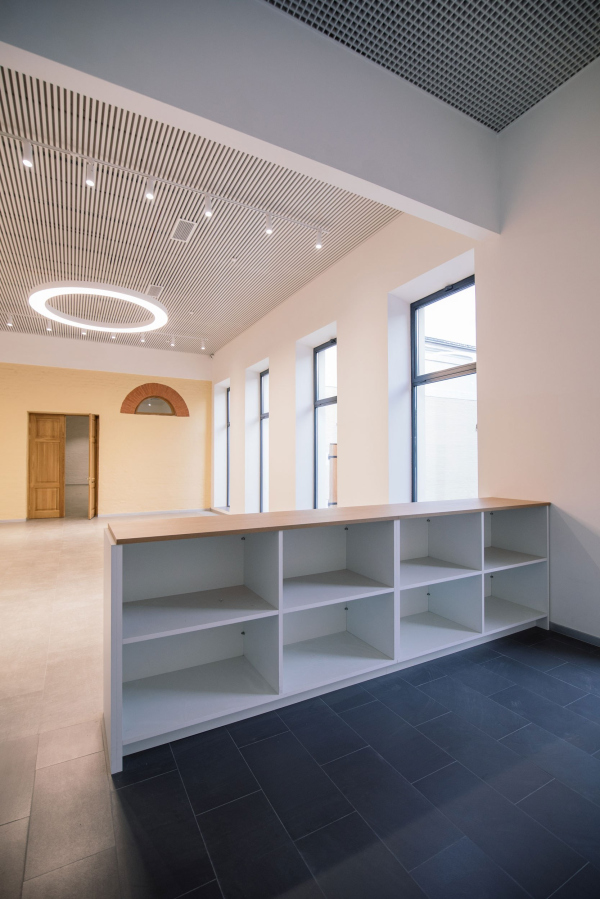 Restoration of Zvenigorod ManegeCopyright: Photograph © Arseny Rassokhin / People′s ArchitectAt this point, perhaps, we should remind the reader that the Zvenigorod Manege was never in fact a manege in the first place, and the date of its construction is not exactly known. According to indirect written sources, it can be dated back to the 1830s – at first it was a state-owned salt warehouse – then a “wine warehouse”, (that is actually a vodka warehouse, bur it was a customary term back then). Then it stood empty for about 30 consecutive years in the XIX century, the city sought to transfer the care of the building to the military, but the military did little, although as many as three times they planned to remodel the former warehouse to be used as that barracks, and it was probably then the name of “Manege” took root. Well, and because of the external resemblance too. The building was finally brought to order in the beginning of the XX century when it hosted a theater, which was later replaced by a movie theater, which was reconstructed in the 1960’s was divided into two halls, and received the above-mentioned foyer. 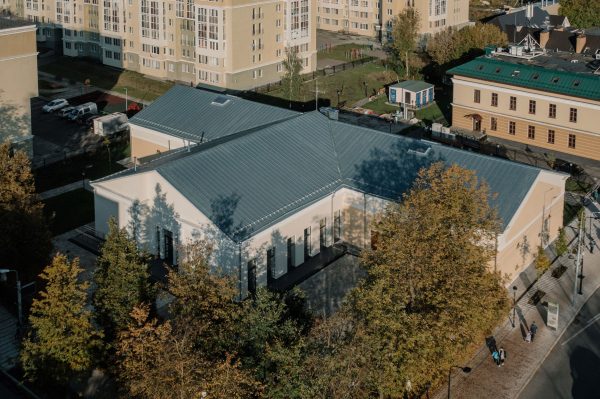 Restoration of Zvenigorod ManegeCopyright: Photograph © Arseny Rassokhin / People′s Architect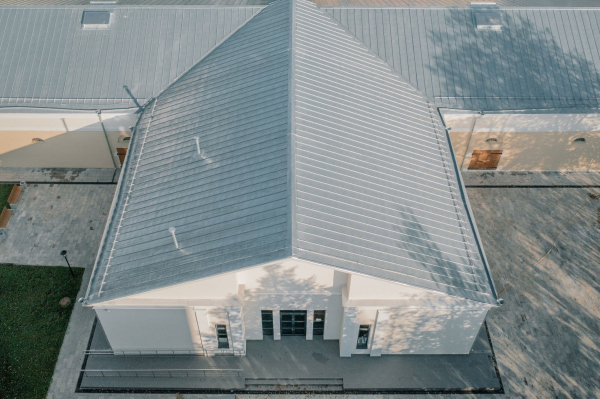 The volume of the foyer added in the 1960s. Restoration of Zvenigorod ManegeCopyright: Photograph © Arseny Rassokhin / People′s ArchitectDuring the research, a few interesting details of the old building’s architecture were discovered: for example, some of the windows appeared to have two-step arches – they were opened, which noticeably revitalized the laconic facade of the former warehouse. The original metal grilles were found in seven windows – they were preserved, but were not supplemented with new ones. Restoration of Zvenigorod ManegeCopyright: Photograph © Arseny Rassokhin / People′s ArchitectSuch a meticulous approach to the history of the building is worthy of all praise, but the “warehouse” doors, built, however, according to the models of the XIX century, seem a bit too “movie-like”, dating back to some reconstructions of the 1980s. Not a big deal, come to think of it – they will also age in due course. The two museum halls inherit the structure of the 1960s movie theater. Between them there is a not very large storage area and staff offices. According to the People’s Architect, the architects and the museum staff had a long discussion about how much space to allocate to exhibits and how much to storage, and in the end, the museum halls were given maximum space. Who was slightly displaced for the sake of the exhibits – it was the staff; but if you look at the plan, you will clearly see that there is much more exhibition space – the museum, now located in the center, is all focused on working with citizens and tourists. “The hall in the Tsaritsyny Chambers of the Savvinsky Monastery is more of a tourist and even a “research” hall, while the Manege is more of a public one, designed to work with people” Alexey Kurkov explains. In addition, in the process of work, the two halls sort of swapped their roles: the smaller one with a recessed amphitheater in the central part was intended for exhibitions, and the large hall was meant to host a permanent exposition. Eventually, it turned out the other way around. The permanent exposition – the result of the work of other authors, generously filled with layouts and media content – is located along the perimeter of the smaller hall. Here they pour virtual borscht on earthenware plates, shine a projection on a model of a bell, there are some birch trunks, and a lot of other things on a small area, although there are also authentic frescoes of the beginning of the XV century. In the middle, in the amphitheater, separated by a curtain, there is a model of Savva Monastery, also surrounded by a large screen. Everything is used somewhat differently than it was intended.  Small hall with amphitheater. Realization. Restoration of the Zvenigorod ManegeCopyright: Photograph © Arseny Rassokhin / People′s Architect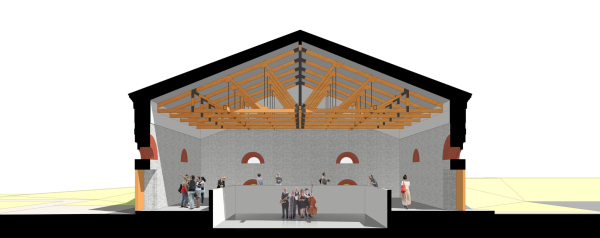 The minor hall with an amphitheater. Restoration of Zvenigorod ManegeCopyright © People′s ArchitectNow the major hall is intended for temporary exhibitions and public events. In early October, a joint exhibition of Levitan with the Russian Museum opened there. 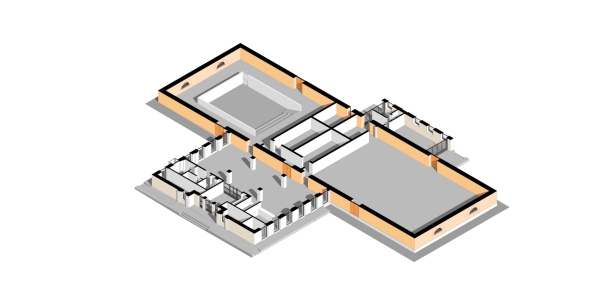 Project of restoration of Zvenigorod Manege, 2021Copyright © People′s Architect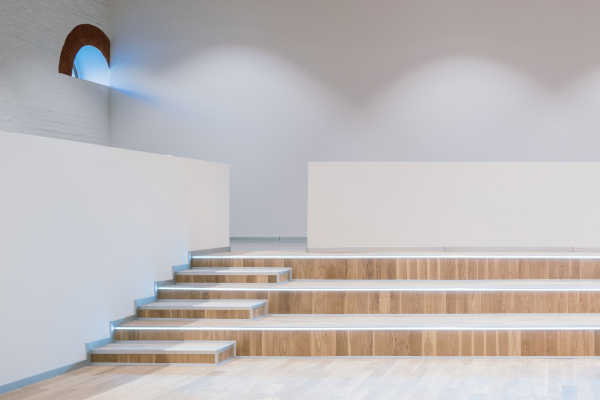 Restoration of Zvenigorod ManegeCopyright: Photograph © Arseny Rassokhin / People′s Architect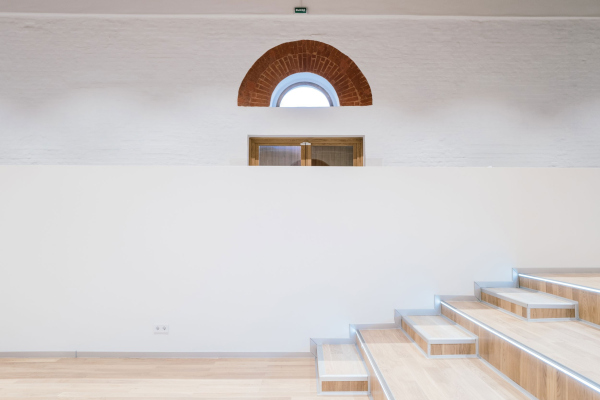 Restoration of Zvenigorod ManegeCopyright: Photograph © Arseny Rassokhin / People′s Architect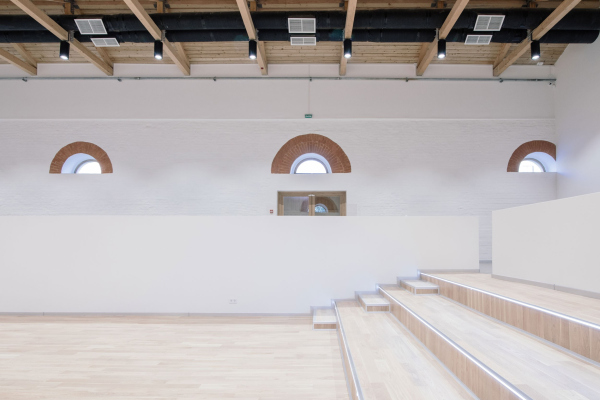 Restoration of Zvenigorod ManegeCopyright: Photograph © Arseny Rassokhin / People′s Architect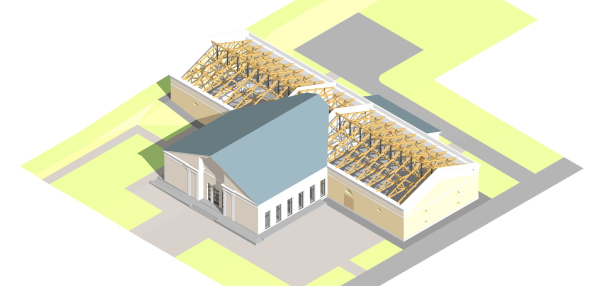 Project of restoration of Zvenigorod Manege, 2021Copyright © People′s Architect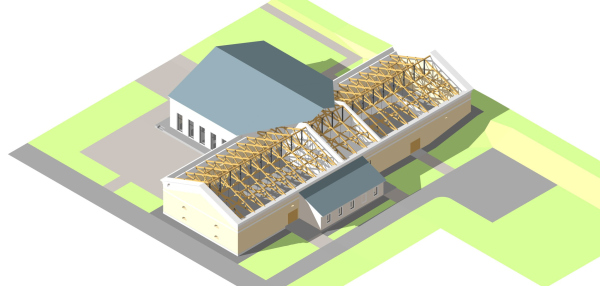 Project of restoration of Zvenigorod Manege, 2021Copyright © People′s Architect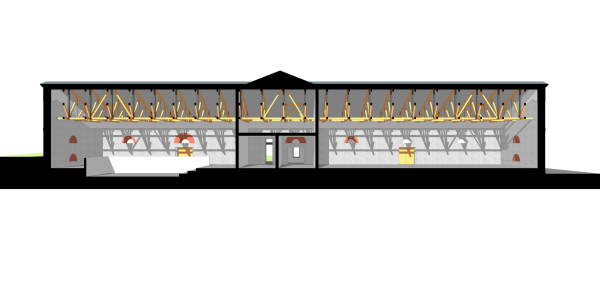 Project of restoration of Zvenigorod Manege, 2021Copyright © People′s ArchitectBut then again, the two halls are not that different in size. The focus of the new building on modern trends in working with visitors is felt quite acutely. In this sense, one can probably understand the reversal of the halls’ functions: the exhibition and lecture hall turned out to be closer to Moskovskaya Street and to the square on the same side of the museum yard, which is planned as a place for outdoor events. The windows of the foyer, as we remember, are extended to the floor, and the step in front of them can serve as a small stage. The square inside the museum yard. Restoration of Zvenigorod ManegeCopyright: Photograph © Arseny Rassokhin / People′s ArchitectThe square from the side of the Moskovskaya Street. Restoration of Zvenigorod ManegeCopyright: Photograph © Arseny Rassokhin / People′s ArchitectThe project continued in organizing the adjacent territory, of which People’s Architect is the perfect master. In this case, they rather subtly combined two themes that were conditioned, among other things, by the history of the building: the pre-Revolution and Soviet. The former is represented by black lanterns scattered all over the place and resonating with leaf-shaped fastenings or the doors. The latter is represented by simple paving patterns and laconic benches and trash cans covered with stone chips – looking at them for the first time, you will not even guess that they are from the seventies. The Soviet past is also funnily represented by a preserved bust of Karl Marx, pushed back into a corner, very beautiful, with the inevitable volumetric beard. 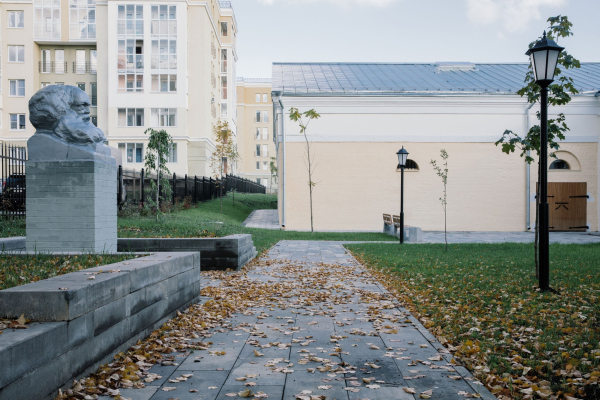 Restoration of Zvenigorod ManegeCopyright: Photograph © Arseny Rassokhin / People′s Architect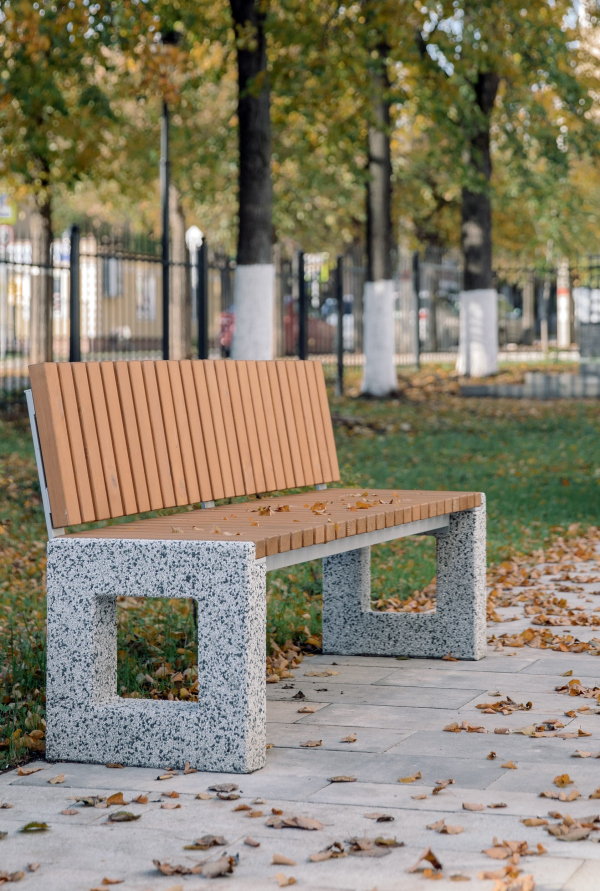 The landscaping project. Restoration of Zvenigorod ManegeCopyright: Photograph © Arseny Rassokhin / People′s Architect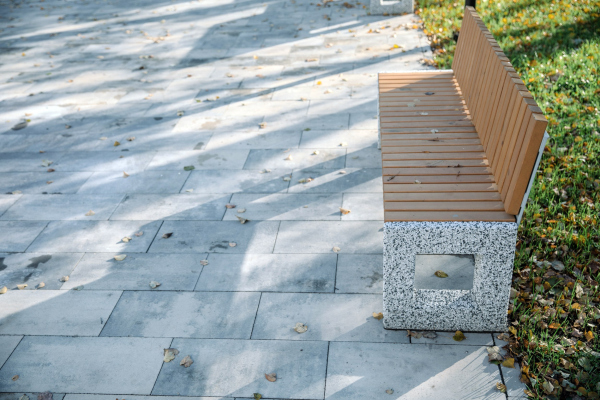 The landscaping project. Restoration of Zvenigorod ManegeCopyright: Photograph © Arseny Rassokhin / People′s Architect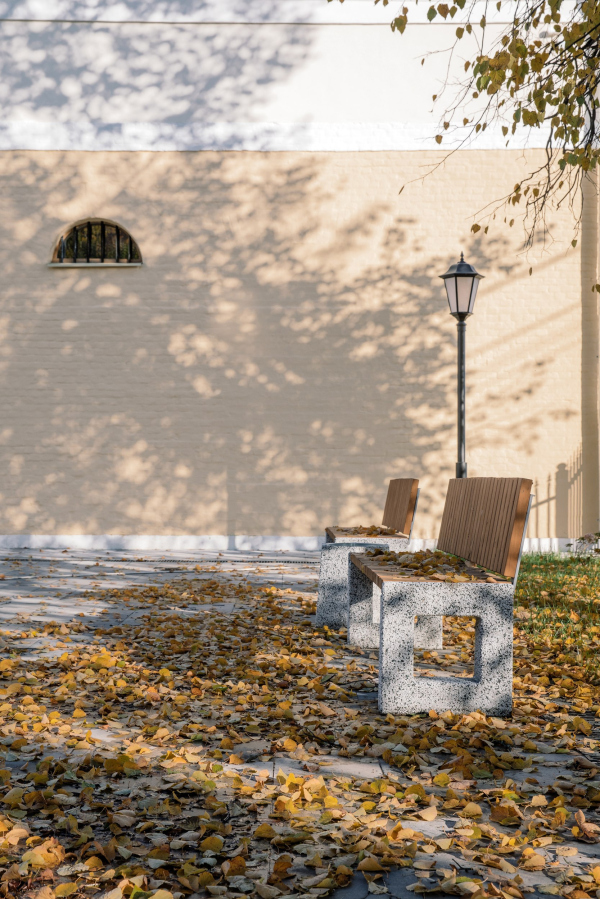 The landscaping project. Restoration of Zvenigorod ManegeCopyright: Photograph © Arseny Rassokhin / People′s Architect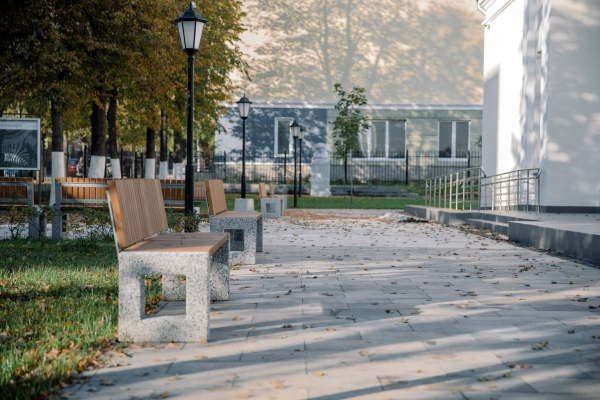 The landscaping project. Restoration of Zvenigorod ManegeCopyright: Photograph © Arseny Rassokhin / People′s Architect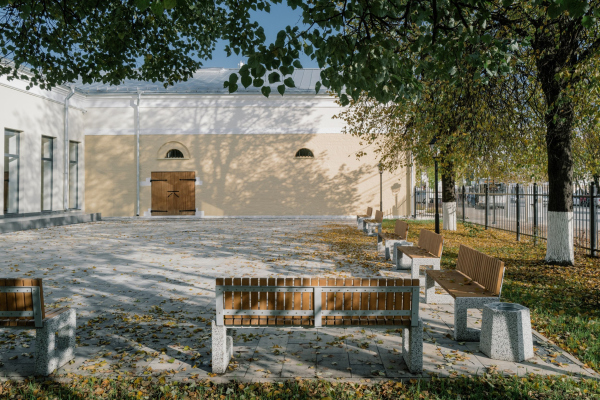 The landscaping project. Restoration of Zvenigorod ManegeCopyright: Photograph © Arseny Rassokhin / People′s ArchitectThe land organization project turned out to be very “calm” and reserved – according to the architects, intentionally calm; the heritage of the old linden trees played a big role here, just like the old walls did in the building. If I was asked to describe this project in one word, this would probably be “reconciliation”: reconciliation of different epochs, parts, and even approaches to museum work. Interestingly, in the 2000s and 2010s, when the Manege was handed over to the museum, even though the building already had the status of a regional cultural heritage site, very different projects for its reconstruction were proposed, from complete renovation to “alter nothing, restore everything”. 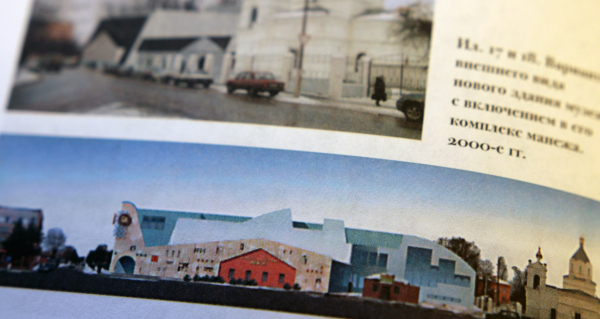 Projects of the 2000s. From the article: D.A. Sedov. Manege – barracks – cellar. The history of misadventures of one of the oldest buildings of Zvenigorod // Savva Readings. Collection of works on the history of Zvenigorod region. Vol. 3. Zvenigorod, 2015Copyright: Photograph: Julia Tarabarina, Archi.ru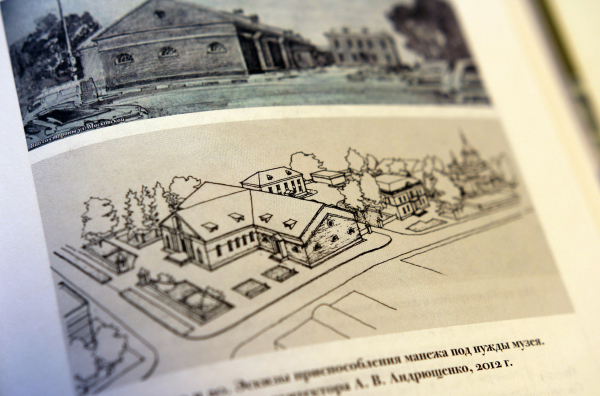 Project by architect A.Andryushenko, 2012. From the article: D.A. Sedov. Manege – barracks – cellar. History of misadventures of one of the oldest buildings of Zvenigorod // Savva Readings. Collection of works on the history of Zvenigorod region. Vol. 3.Copyright: Photograph: Julia Tarabarina, Archi.ruThe realized project of People’s Architect” is certainly closer to the second approach, if we cross it with the attention to public spaces, which is still topical nowadays. The oldest building of the city, which can boast an ancient history, but is not very ancient itself, has acquired its due status, has become noticeable, though not garish, and has balanced out the paradox of the Soviet and Empire components. What’s up next? Time will tell. 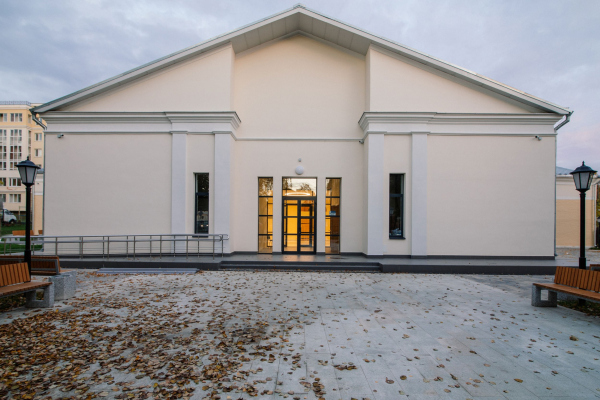 Restoration of Zvenigorod ManegeCopyright: Photograph © Arseny Rassokhin / People′s Architect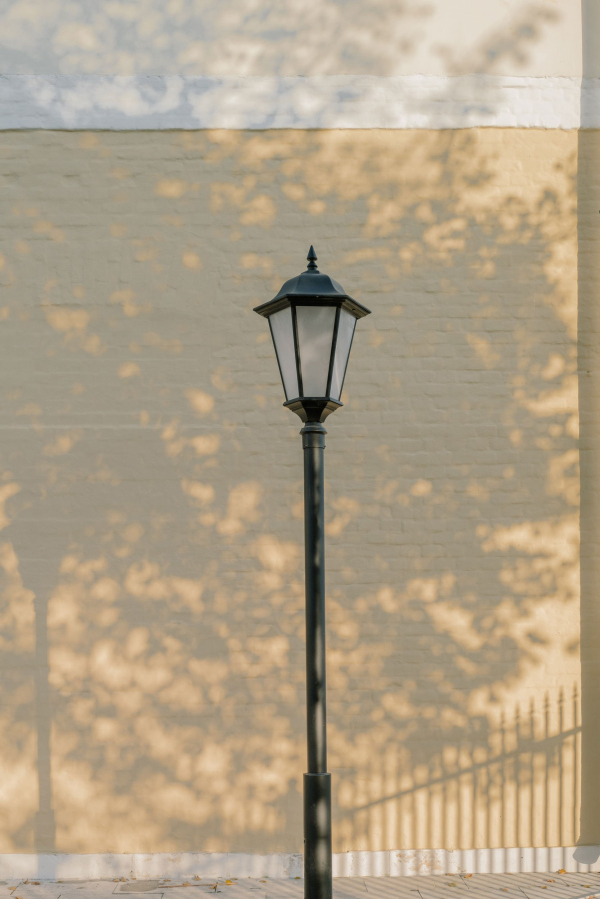 Restoration of Zvenigorod ManegeCopyright: Photograph © Arseny Rassokhin / People′s Architect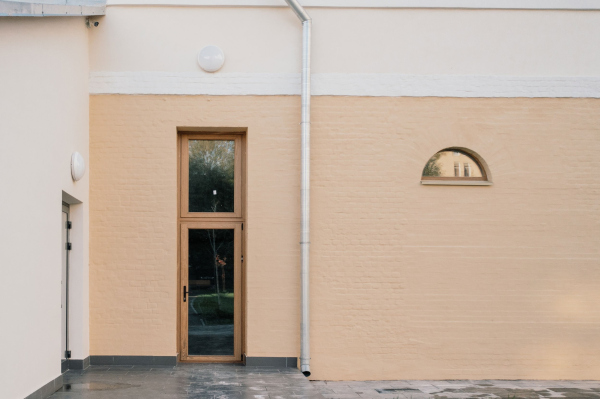 Restoration of Zvenigorod ManegeCopyright: Photograph © Arseny Rassokhin / People′s Architect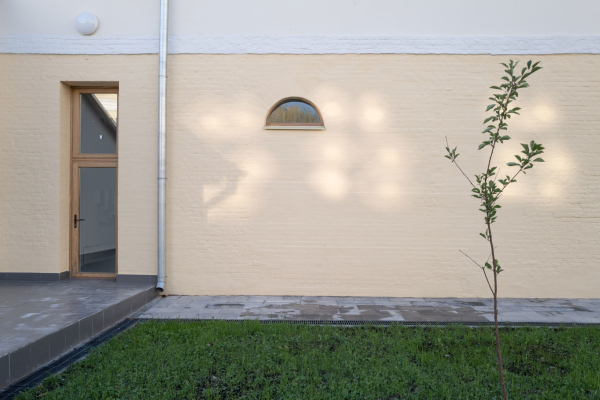 Restoration of Zvenigorod ManegeCopyright: Photograph © Arseny Rassokhin / People′s Architect Restoration of Zvenigorod ManegeCopyright: Photograph © Arseny Rassokhin / People′s Architect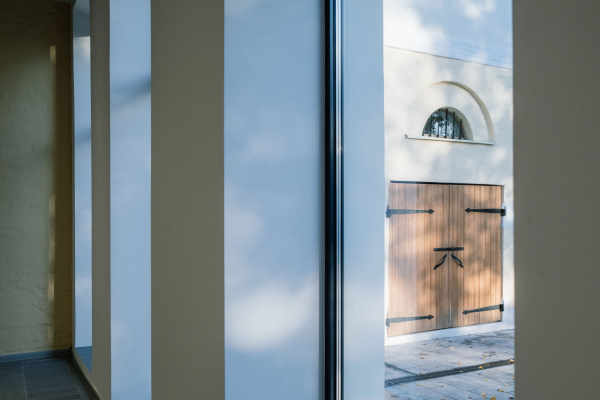 Restoration of Zvenigorod ManegeCopyright: Photograph © Arseny Rassokhin / People′s Architect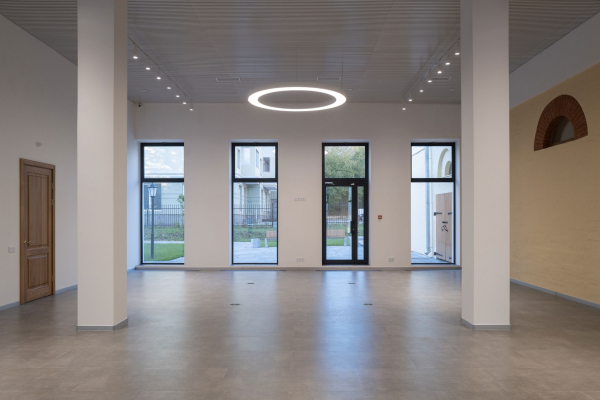 Restoration of Zvenigorod ManegeCopyright: Photograph © Arseny Rassokhin / People′s Architect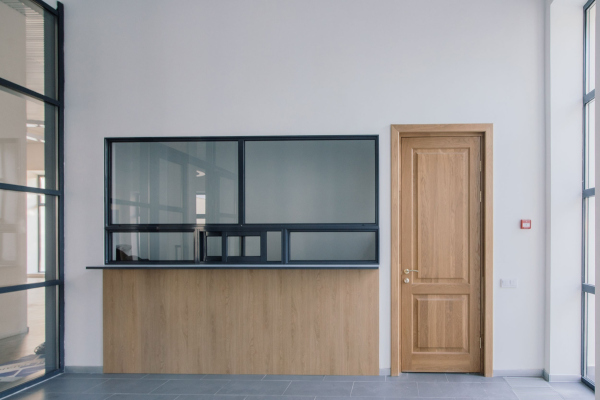 Restoration of Zvenigorod ManegeCopyright: Photograph © Arseny Rassokhin / People′s Architect Restoration of Zvenigorod ManegeCopyright: Photograph © Arseny Rassokhin / People′s Architect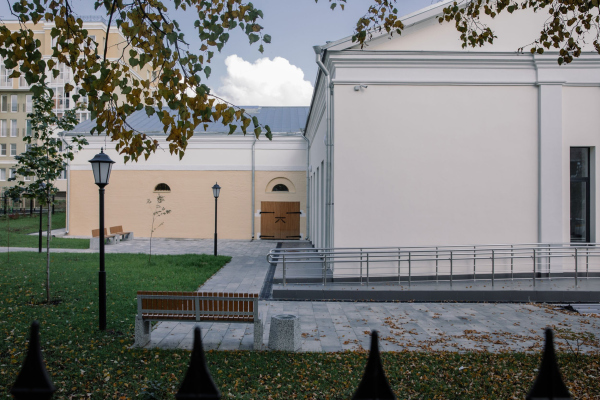 Restoration of Zvenigorod ManegeCopyright: Photograph © Arseny Rassokhin / People′s Architect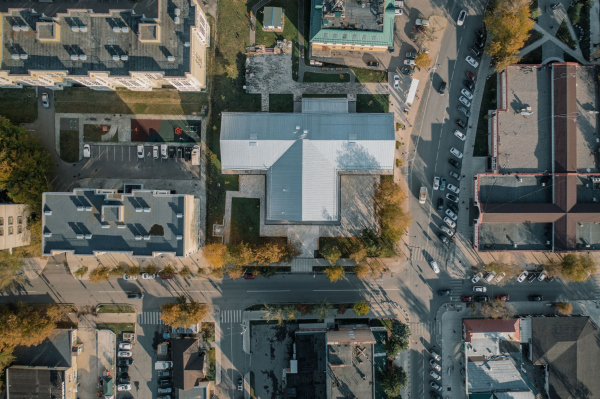 Project of restoration of Zvenigorod ManegeCopyright: Photograph © Arseny Rassokhin / People′s Architect |
|
